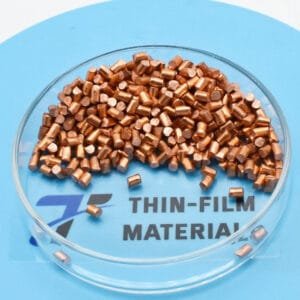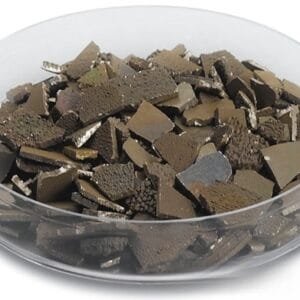N-type Silicon Evaporation Materials Description
Silicon, classified as a metalloid, exhibits characteristics of both metals and nonmetals. This element is known for its exceptional resistance to chemical reactions, remaining inert and insoluble in water and most acids. However, when exposed to hot alkaline solutions, silicon can be dissolved, forming silicates. In its pure form, silicon manifests as dark gray, shiny crystals with a metallic luster. Its thermal conductivity is notably high, yet it maintains low electrical conductivity unless modified.
In deposition processes, high purity N-type Silicon is crucial for achieving superior film quality. TFM specializes in providing Silicon evaporation materials with a purity of up to 99.999%. These materials undergo stringent quality assurance measures to ensure consistent performance and reliability in demanding applications.
This specialized silicon, when alloyed with aluminum, further enhances the material’s strength while reducing its weight, making it indispensable in various high-tech industries.
![]()
N-type Silicon Evaporation Materials Specification
| Material Type | N-type Silicon |
| Symbol | Si |
| Color/Appearance | Dark Gray with a Bluish Tinge, Semi-Metallic |
| Melting Point | 1,410 °C |
| Density | 2.32 g/cc |
| Thermal Conductivity | 150 W·m-1·K-1 (25°C) |
| Thermal Expansion | 2.6 x 10-6/K (25°C) |
| Bulk Resistivity | 0.005-0.020 OHM-CM |
| Synonyms | N-type Silicon Pellets, N-type Silicon Pieces, N-type Silicon Evaporation Pellet, N-type Si Pellets, N-type Si Pieces, N-type Si Evaporation Pellet |
N-type Silicon Evaporation Materials Application
N-type Silicon Evaporation Materials Packaging
Get Contact
TFM offers N-type silicon evaporation materials in a range of forms, purities, sizes, and price points. We focus on producing high-purity e-beam evaporation materials, emphasizing the highest density and the smallest average grain sizes. For the latest pricing on evaporation pellets and other deposition materials not listed, please contact us with your inquiry.

 MSDS File
MSDS File



Reviews
There are no reviews yet.